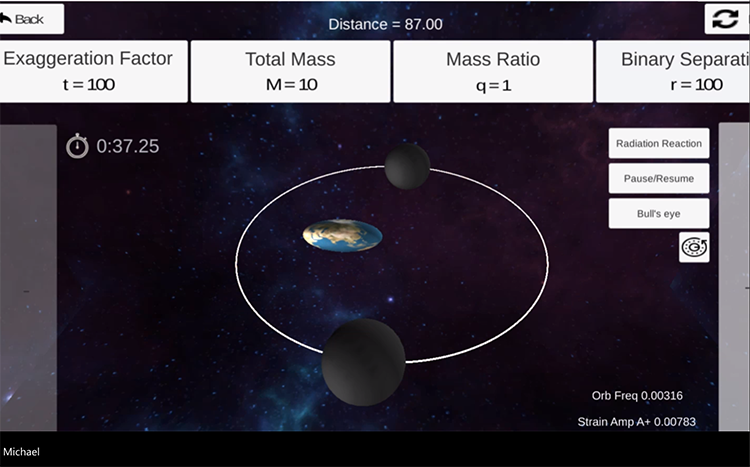Astrophysicist and associate professor of physics Dr. Michael Kesden recently was elected vice chair of the Texas Section of the American Physical Society (APS), a non-profit organization dedicated to advancing and spreading physics knowledge.
The election to the vice chair post puts Kesden in line next to be chair-elect, then chairman and finally past chair of the Texas Section. The Texas Section, which also includes Oklahoma and Arkansas, has roughly 1,500 members. Nationwide, the APS has 55,000 members.
“Rather than having new people come in and start from scratch each time, this chair line encourages continuity,” Kesden said. “I think it’s a smart strategy.”
The APS is broken down into various units – subfields of physics – including computational physics, laser science, nuclear physics, particle physics, plasma physics, astrophysics and more. There are 10 sections covering the United States.
The Texas Section hosts two regional meetings, one in the spring, one in the fall. These are joint meetings of the American Physical Society, the Association of Physics Teachers, who are K-12 educators, and also the Society of Physics Students. UT Dallas hosted, most recently, the fall 2017 meeting.
“It’s a chance for students, secondary teachers, professional physicists and university professors all to be together and learn from each other. These meetings, depending on where they’re located, typically draw about 400 people.
“Finding universities to host these meetings – to help supervise, invite speakers, and organize the talks that are presented at the conference workshops for training teachers and professional development – it is probably the top responsibility of the Texas Section of APS,” Kesden said.
Congressional Visit Day also is a big part of the society’s efforts. Physics academic research is largely funded by the U.S. government, including NASA, the Department of Defense and the Department of Energy, so the APS advocates for science and education funding, for improving infrastructure and for boosting diversity.
“We go to Washington and meet with the staffs of senators and members of the House and help them appreciate how important education is toward growing the economy,” said Kesden, whose last visit was in 2018. “We talk about climate change a lot, too, because it’s an immediate threat to our future.”
In terms of personal touches that Kesden might want to bring to his new post, he says he has a couple.
“Two things I would like to achieve during my four-year term on this chair line are creating opportunities to share physics education resources and expanding graduate school recruitment within the section,” he said.
“I’m hoping to coordinate bringing innovative teaching techniques in physics, both to shine a spotlight on research efforts throughout the Texas Section and to bring in resources and make them readily available to faculty,” he said.
“Teaching kind of underwent a revolution in the past 10, maybe 15 years. It used to be the professor with his jacket and elbow patches would go up to the chalkboard and talk on and on and on, and the students would just sit there, listen and take notes. That’s the passive model of teaching, whereas an active model of teaching, students take center stage.
“They call it flipping the classroom. Students are learning from each other, doing some group activity in class. Lectures may be prerecorded, and students can watch them in preparation for when they are in class together, where they can engage in active learning. Research has shown that students taught in virtually any kind of active learning setting outperform those using the passive style of learning,” Kesden said.

Kesden said that he and Dr. Mary Urquhart, associate professor and head of the Department of Science/Mathematics Education, work together on a project called STEPP – Scaffolded Training Environment for Physics Programming – that tests novel approaches for teaching physics to high school students.
“I want to create a section within the Texas Section of APS’s website highlighting STEPP. There also are other physics education research groups throughout the state to bring forward,” Kesden said.
“There are a lot of big universities in Texas, but we’re losing students – it’s a brain drain. If you look at how many students from outside the state come to Texas for their education versus the number of Texas people who leave to go to California or New York or go somewhere else to do their undergraduate or graduate studies, I think there’s a debt or outflow from Texas. And that’s something we certainly want to correct,” Kesden said.
Kesden’s key research interest is in black holes and using astrophysical observations to predict where and how often black holes merge with each other.
Help us leave the planet a better place for future generations. Your support for the School of Natural Sciences and Mathematics funds scientific discoveries with real-world applications, student and faculty recruitment, and academic scholarships.